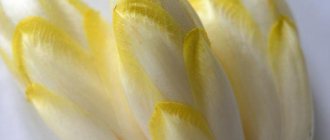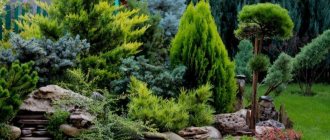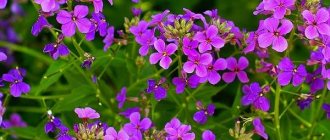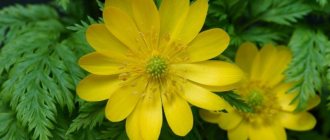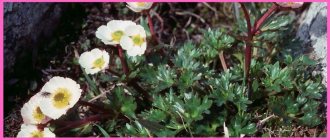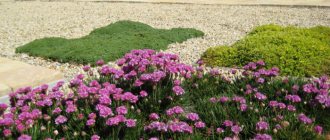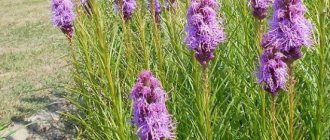The modest enchantress - scabiosa - is familiar to most gardeners. Its small but bright flowers decorate many garden plots. This beautifully flowering representative of the decorative flora looks very harmonious: a dense rosette of carved leaves is crowned with tall shoots with buds. Blooming, the buds turn into fluffy balls-inflorescences of various shades: white, pink, blue, lilac. Scabiosa blooms for a long time and gives its beauty almost all summer.
Scabiosa is distinguished not only by its pleasant appearance, but also by its flexible character. Growing it is not at all difficult: the plant needs to be watered occasionally, lightly fed and replanted from time to time. The flower tolerates the temperate climate of our country well, however, some species, whose homeland is the subtropics, can only be cultivated as annuals in more northern regions. In general, we can say that scabiosa is perfect for everyone, including the most inexperienced gardeners.
Scabiosa, at least one species, is a medicinal plant often used in Tibetan folk medicine. She treats colds, sore throats, lung and heart diseases, and skin ailments. In addition, the flower is very attractive to beneficial insects: butterflies, bees, bumblebees and is considered an excellent honey plant. Well, the most important thing for which it is worth growing scabiosa is the attractive beauty of a gentle, modest woman.
The name of this wonderful flower comes from the Latin word translated as “itch” or “scabies” (the plant is believed to cure this skin ailment). According to another version, scabiosis is “rough” or “lumpy,” which indicates rough bracts. The popular names of the culture are also associated with its structural features and medicinal properties - cornflower, umbilicalis, pine cone. In English-speaking countries, the flower is called pincushion or devil's root. Legend has it that the devil, annoyed by the beauty of the flower, wanted to destroy it by biting the root. Scabiosa survived, but since then its root has no ending and resembles a stump.
The plant's homeland is considered to be Southern and Central Europe, the mountains of South Africa and Central Asia. In our country, wild scabiosa is most often found in the Caucasus, although individual specimens can be seen throughout the European part of Russia. The flower prefers to settle in dry meadows, mountains, foothills and other open sunny places with rocky soil.
Botany classifies scabiosa (lat. Scabiosa) to the honeysuckle family (lat. Caprifoliaceae), or more precisely to the teasel subfamily (lat. Dipsacoideae). Its closest relatives, known in decorative floriculture, are capitate, teasel and greenweed.
The genus includes at least 100 species, both annual and perennial herbs and subshrubs.
[!] Some species, previously considered scabioses, are now separated into a separate genus. For example, scabiosa arvensis and Macedonian scabiosa, which are popular in decorative floriculture, are now called field and Macedonian bark.
All plants of the genus have several common features: a branched rhizome, simple or branched erect strong shoots, opposite leaves of a pinnate, jagged or lobed shape. At the ends of long peduncles, flowers appear, collected in inflorescence-heads in the form of a slightly flattened ball. Their color can be very different: white, cream, soft or bright pink, purple. Each inflorescence is framed by a bract of short leaves. After flowering, a fruit appears with a large number of small black seeds.
general description
The flower has erect or branched shoots up to 1-1.1 m high. The leaves are pinnately divided, the inflorescences form dense bunches. In its natural environment it grows in temperate latitudes of Asia and Europe; both some natural species and selected hybrids are used in culture. The vast majority are perennials, but annual and biennial varieties are occasionally found.
The root is vertical, powerful. The color of the inflorescences is very diverse - from snow-white and pink to dark purple and crimson. The palette includes blue, yellow, and lavender colors. Flowering occurs in the second half of summer, occupying a niche between early and autumn flowers, after which the fruit ripens - a crowned achene with small oval brown seeds.
Scabiosa is rich in nectar, so it actively attracts pollinating insects to the garden.
Natural types of scabiosa
The flowering of our perennial plant is long and abundant (the same is true for mallow). In addition to their beautiful appearance, flowers have medicinal properties. It was believed that the plant could cure scabies, because the literal translation of scabiosa is “scabies.” All types of plants are unpretentious in care.
Pigeon
Mountain species of scabiosa. Propagates by self-sowing. Bushes can be found along the banks of streams, in meadows, among bushes. Quite a rare flower.
The flowering period of perennial or biennial pigeon scabiosa lasts from early summer to autumn. The long stem of the plant reaches a height of more than a meter, is slightly pubescent and has branches upward. The leaves are oblong or pinnately divided. The brownish-red or purple calyx has bristles and is 5 mm long. The flowers are quite large.
Japanese
When grown by seed, the seeds of this scabiosa are planted in the soil in May, and when grown by seedlings - in March. The variety is resistant to temperature changes, tolerates mild aridity, but does not tolerate waterlogged soil. Therefore, it needs to be grown in well-drained soil. The Japanese use the flower leaves and roots to prepare healing potions.
Caucasian
The plant reaches a height of 60 cm. The tall, erect stems of scabiosa are strewn with lavender or pale blue flowers, which bloom up to 8 cm in diameter. Flowering begins quite late, only at the end of summer and continues until late autumn. The pleasant smell of flowers attracts insects that pollinate the flowers.
Purple
The species differs from all others in that it has very fragrant snow-white, purple, blue and pink flowers. On the sinewy legs of the branched plant there are serrated vertical leaves reaching a length of 5 cm. The diameter of scabiosa flowers reaches 2 cm. Neutral soil with normal acidity is suitable for cultivation. Distributed throughout Southern Europe. Purple scabiosa is an annual plant, although there are also perennial species. Thanks to its unusually beautiful flowers, it is popular with gardeners and is used to decorate flower beds at their summer cottage. This scabiosa will not grow in alkaline soil. To lower the alkaline level, you need to add a little lime.
Polaniferous
Attractive inflorescences of a pale blue or silver-white hue, beautifully arranged on stems up to half a meter high. Propagated by seeds. Used to decorate rocky gardens.
Pale yellow
Even a novice gardener can grow this scabiosa from seeds. This plant does not require any special conditions. It grows well even in poor soil. Propagated by dividing the bush. Small inflorescences, yellowish-cream in color, give the plant a decorative appearance.
With good care, scabiosis flowers grown from seeds decorate the flowerbed from early spring until late autumn.
Popular varieties
Teasel has about a hundred species and varieties, more than half of which are artificially bred from the most interesting and decorative natural varieties.
Scabiosa purpurea
A very fragrant species with upright leaves and delicate small (up to 2 cm) flowers in purple, pink or blue, as well as pure white varieties. It is distributed in the regions of Southern Europe. The stamens on the flowers of this variety look very impressive, like pins stuck into a pincushion (for which the plant received the name “pincushion”). It is usually grown as an annual plant, but in areas where winter temperatures do not fall below zero, it can grow as a perennial. This is one of the most cold-resistant plant species.
Caucasian
It is a textbook representative of perennial scabiosis, which has long and successfully taken root in our garden plots. It has a height of 50-60cm, forming a lush, spectacular bush, which is not a shame to place in a front flower bed. The flowers are light, white-cream to ocher in color. Up to 30 buds can bloom on a bush at one time. The variety is the genetic material for breeding varieties with blue-violet inflorescences. Flowering is long, up to 40 days. The best representatives of the species are the white-flowered Alba and Miss Wilmotg, as well as the blue-violet Morhaime Blue and Nachtfalter.
Fading flowers should be promptly removed to stimulate the development of new buds.
Scabiosa japonica
A perennial or biennial low-growing border variety native to the Japanese Islands. In nature, it grows in the highlands and has a high level of resistance to cold. Like other varieties, it does not tolerate waterlogging of the soil, including in winter. Of the colors, pink-red prevails, and the flowers themselves are considered edible after heat treatment, at least in their homeland, Japan.
In the group, it is worth highlighting the border varieties Ritz, Romantika, as well as the bright Blue Diamond.
Dark purple
An annual also called Egyptian rose or widow's flower. One of the tallest varieties, exceeding a height of 1 m. The inflorescences are neat, in red, burgundy or dark purple tones, but varieties with snow-white, pinkish and blue buds can also be found. Recommended varieties are Douglas, Rose Cascade and delicate Scarlet.
Scabiosa Riddle
It comes in a variety of garden colors from delicate whites, creams and light purples to bold purples, scarlets and bright reds. The flowers are double, large, up to 6 cm.
Care
Although gardeners claim that caring for this flower is not difficult, some tips on agricultural technology should still be given.
Watering.
Scabiosa easily tolerates drought. Following this rule, you should water infrequently and with moderate amounts of water. Watering should be done when the top layer of soil dries well. If you water this plant too often, the roots will soon rot and the bush will die.
Fertilizer and top dressing.
Before planting seedlings or seeds, you need to fertilize the soil with mullein or compost. To do this, add 1 bucket of manure per 1 m2 of flower bed. When the root system is strong enough, it needs to be fed again. For fertilizing, special fertilizers intended for perennial flowering plants are used. Dissolve it in water in the amount of 20 g of fertilizer per 1 m2 of flower bed. Feeding the bushes should be carried out periodically throughout the flowering period - this will help increase the diameter of the inflorescences and increase the brightness of flowering. Scabioses love phosphorus and potassium in fertilizers. For this, potassium salt, potassium nitrate, superphosphates or potassium sulfate are used.
Weeding and loosening.
To provide oxygen access to plant roots, loosening is carried out. This procedure can be carried out after each watering or heavy rain. Weeding is necessary to prevent weeds from drowning out the flower bushes.
Trimming.
Faded inflorescences must be removed by sanitary pruning of the bushes. This will make the plant aesthetically pleasing and prevent natural seeding. Also, all diseased stems, inflorescences and leaves must be removed in a timely manner so that the disease does not spread to the rest of the plant.
Wintering.
In regions where winters have little snow or severe frosts, the soil around the plants is covered. To do this, use mulch made from sawdust or leaves. You can dig up the rhizomes and keep them in the basement, and replant them in the spring.
Video “Growing Scabiosa from Seeds”
Growing in the garden
The plant is cold-resistant and has low vulnerability to drought. Even inexperienced flower growers can take on its cultivation in ornamental gardening without fear.
Location and soil requirements
It is necessary to choose a sunny, well-lit place on a hill, where flooding by groundwater or stagnation of moisture after precipitation is excluded. The plant will not refuse light fertile soil rich in humus, but it will not wither on poor soil, although it will not produce such lush and bright flowering. Good drainage is a must! Ideal pH=7. Planting in too acidic soil can lead to death, especially if the seedlings were grown in neutral soil.
The landing site must be protected from strong gusty winds.
Watering
For this crop, overwatering and other dampness are destructive, so moisture should be moderate and only as needed in particularly dry weather. It is advisable to loosen the soil after watering.
Top dressing
Teasel is very responsive to fertilizers, producing larger, fuller and brighter buds. Therefore, fertilizing is highly recommended at the beginning of flowering and until it ends, once a week. Preference should be given to potassium and phosphorus components.
Before flowering begins, you should be very careful with fertilizing so as not to provoke the growth of vegetative mass to the detriment of decorative flowering.
Wintering
Perennial specimens are mostly cold-resistant, but different varieties tolerate winter differently, so it is worth taking care and covering the planting with fallen leaves, straw or other mulch. All shoots of the current year are pre-cut at the root.
Growing scabiosa from seeds
Despite the fact that the plant is cold-resistant, many people plant it using seedlings. This guarantees genetic purity in terms of varietal characteristics and gives the most magnificent, spectacular, early and long-lasting flowering. However, this does not mean that scabiosa cannot be planted directly in open ground. Ultimately, it all depends on the goals and capabilities of the grower.
Planting seeds in open ground
The recommended planting date is the end of April or the beginning of May, but you should focus on the climate and weather. The seeds are planted at a shallow depth in moist soil, after which a thin layer of compost can be poured on top. This will protect the seeds from freezing in the event of return frosts, although scabiosa is a cold-resistant plant and usually does not suffer from it. You can expect germination in about 2 weeks, and after another half a month you should thin out the planting, leaving 20-25cm between the bushes.
Seedling method
Planting dates are calculated based on the fact that seedlings can be brought into open ground approximately 10 weeks after sowing the seeds. For middle latitudes, you should focus on mid-March, in warmer regions - at the end of winter. The boarding process is standard. The seeds are sown superficially in a moist substrate, after which the container is covered with film or glass, which is lifted daily for ventilation. They will need to be removed when the first shoots appear. A little later, diving or thinning is carried out in such a way that there is at least 5 cm between the seedlings. When thinning the seedlings, they should not be pulled out of the ground, but cut with scissors. Two weeks before taking them outside, they begin to harden the seedlings, gradually increasing the time.
Containers for seedlings must have good drainage.
Types and varieties for open ground
There are about 100 varieties of scabiosa. Most of them are obtained through selection. Among them there are both annuals and perennials. The types of scabiosa described below are most often cultivated in open ground.
Star-shaped
An annual native to Southern Europe, 15-45 cm high. The flowers are pale blue, collected in capitate inflorescences, located on long peduncles.
Dark purple
An annual species with branched straight stems, reaching a height of 1-1.2 m. It is also called widow's flower and Egyptian rose. Dark purple, white or pink flowers bloom on long, flexible stalks (depending on the variety).
Caucasian
Perennial 0.7-0.9 m high. The stems are strong and lightly branched. The leaves are lanceolate and form a basal rosette. The flowers are collected in capitate inflorescences up to 10 cm in diameter. They can be white, pink, or blue. The crop blooms in June-July.
Venechnaya
Low perennial up to 0.5 m tall. Stems are erect, with few branches. The stem leaves are on short petioles, pinnately divided. Flowers up to 3 cm in diameter are light bluish.
Japanese
A low perennial species up to 25 cm high, which is found mainly in the mountains. The plant bushes well and blooms for a long time. The flowers are mostly lilac.
Pale yellow
Tall herbaceous hybrid with feathery leaf blades. The flowers are pale yellow.
Dividing the bush
Perennial varieties of scabiosis can begin to bloom in the second, and sometimes only in the third year. By this time, they have formed a fairly powerful bush that tolerates division well. It is best to do this in early spring or autumn, but this point is not essential. Adult scabiosa bushes can be replanted regardless of the vegetative cycle, even during flowering.
In addition, after 5 years of growing in one place, the specimen begins to bloom less actively and brightly and gradually loses its decorative effect. In this case, it is also recommended to replant it while simultaneously dividing the bush. The rhizome is divided in such a way that roots and a pair of stems remain on each division.
Scabiosa seeds remain viable for two years.
Collection and storage of seeds
Seeds are collected in autumn. If you want to propagate the crop yourself and use your own seeds, you need to tie several ripening buds with gauze and leave until they acquire a burgundy color. Seeds can remain viable for up to 3 years.
The collected seeds are placed in cotton cloth and buried in sand. They are stored in the cellar or in the refrigerator until spring.
Diseases and pests
Teasel is not particularly susceptible to infections and other diseases, however, excessive watering or waterlogged areas can lead to the rapid development of fungal diseases. If traces of rot are noticed, watering should be stopped immediately, the soil should be loosened and all weeds removed so that the planting is well ventilated. By the way, weeding for this crop is an important point of care.
Powdery mildew is possible due to the transfer of pathogens by insects or gusts of wind. If the air temperature is below +20C, and high humidity remains, the disease can progress quickly and destroy the planting in a short time. If signs of infection are detected, chemicals containing sulfur should be used, repeating the treatment after a week.
Another way to combat powdery mildew is mullein, diluted in a ratio of 1:10, with the addition of urea (1 tbsp per bucket). Treatment is carried out twice at once - in the morning and in the evening.
Scabiosa flowers last a long time when cut, maintaining freshness for up to 5-7 days.
Scabiosa in a bouquet
Use in decoration, combination with other cultures
Low-growing varieties of scabiosa are often used as solo border plants and in compositions for mixborders. In mixed flower beds they combine beautifully with dwarf irises and hostas. White and blue varieties look stunning in the company of white lobularia. Purple varieties are recommended to be combined with so-called rural garden crops. These are cornflower, Fassin's catnip, various varieties of phlox (especially paniculata), yellow yarrow, and gypsophila. Other successful flower bed partners include pearl anaphalis, Missouri evening primrose, various types of asters, especially chamomile and perinean, as well as oak sage.

